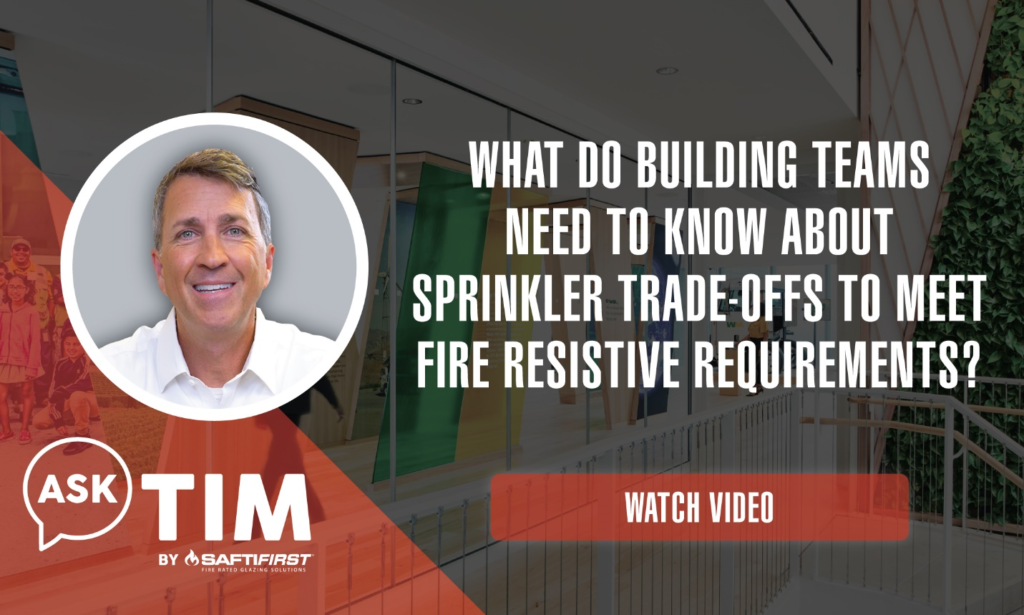Considering Sprinkler Trade-offs?

In this Ask Tim episode, Tim Nass explains that before considering deluge sprinklers as a cost-saving alternative to fire resistive glazing used in 1 and 2 hour assemblies, there are some things architects and building owners should know.
1. Architects and building owners assume all costs and responsibilities when applying for AHJ approval. The use of deluge sprinklers with non-rated glass must first be approved by the AHJ. For the review process, architects and owners must submit documented proof that the design and installation meets all the requirements as well as hydraulic calculations for each installation. On the other hand, using fire resistive glazing does not require prior AHJ approval.
2. Deluge sprinklers with non-rated glass may cost more than fire resistive glass, actually. On the surface, it may seem like a couple of sprinkler heads and tempered glass would be cheaper than fire resistive glass that meets ASTM E-119. However, when you factor in the cost of obtaining AHJ approval (see above), guaranteeing a dedicated 1 or 2 hour water supply separate from other areas of the building, upgrading pumps to maintain the prescribed water pressure needed for each installation and the ongoing maintenance costs, it ends up costing more because none of these are required with fire resistive glazing assemblies.
3. The possibility of sprinkler failure puts building occupants at risk. No sprinkler manufacturer or installer will guarantee that it will work 100% of the time. An NFPA study on US Experience with Sprinklers reported that sprinklers operated effectively in 88% of the fires large enough to trigger them. It goes on to mention several reasons for sprinkler failures or ineffectiveness, such as system was shut off, not enough water was discharged, lack of maintenance, among others. Sprinklers can also fail during natural disasters such as earthquakes or extreme cold causing sprinkler pipes to burst.
The bottom line is that when the sprinklers fail to operate, the non-rated glass will be useless in preventing fire, smoke and dangerous radiant heat from spreading. Building occupants are no longer protected, and safe egress becomes almost impossible. In contrast, 1 and 2 hour fire resistive glass that meets ASTM E-119 works 24/7 without the mechanical triggers that sprinklers need, which makes it reliable and virtually maintenance-free.
If you have a question about fire rated glass and framing, send it to asktim@safti.com and we’ll address it in future episodes.